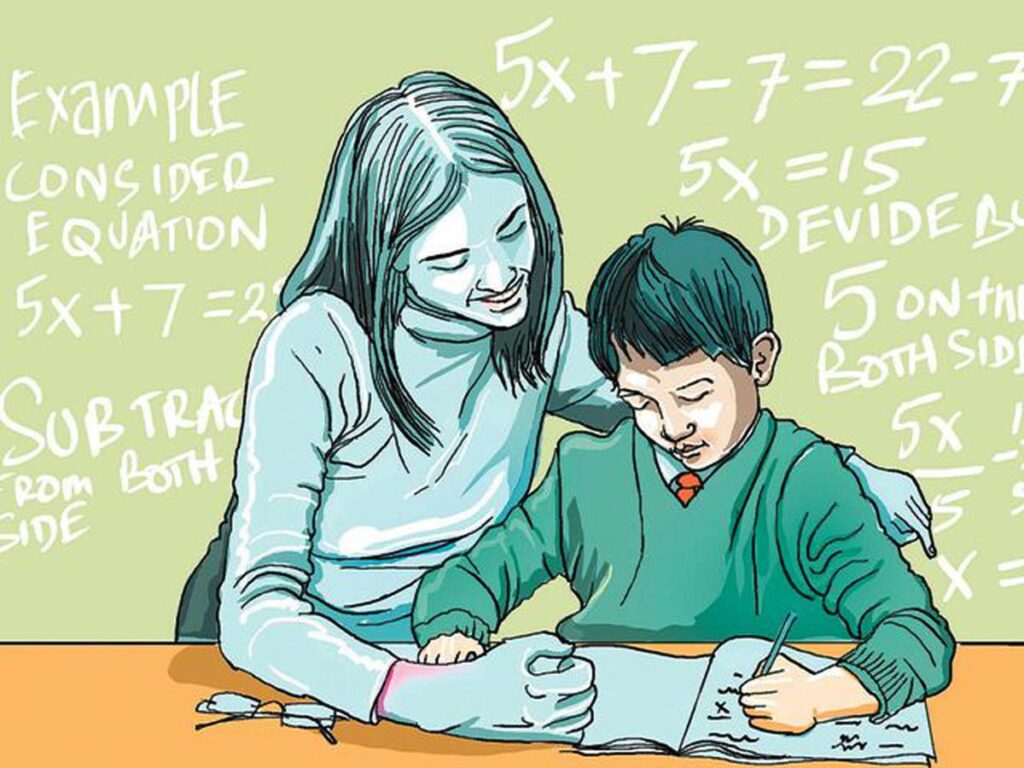Apnipathshala
Why Older Students Make the Best Teachers
Education is a journey that never truly ends, and sometimes the best teachers are found among those who are still students themselves. In this blog, we explore the unique qualities that make older students exceptional educators, breaking the stereotype that teaching is solely reserved for those with formal credentials.

Introduction
Education is a continuous journey, a lifelong process of learning, growing, and evolving. While traditional education often focuses on younger students, the role of older students as teachers holds immense potential to transform the learning experience and foster a deeper understanding of the world around us.
Older students, those who have already traversed the academic terrain, bring a unique perspective and wealth of experience to the teaching role. They have firsthand knowledge of the challenges and triumphs inherent in the learning process, making them empathetic guides and relatable role models for their younger peers.
Connecting with Real-World Experiences
Older students have a wealth of real-world experiences to draw upon, which they can use to make abstract concepts more tangible and relevant for younger students. They can share personal anecdotes, provide real-world examples, and use current events to illustrate the application of theoretical knowledge. This experiential approach to teaching makes learning more engaging and meaningful, as it helps students connect what they are learning to their own lives and the world around them.
For example, a student who is learning about geography can share their experience of visiting a different country, or a student who is learning about history can talk about the challenges faced by their grandparents during a particular historical event. These real-world connections make learning more relatable and memorable, and they can help students see the relevance of their education to their own lives and future careers.
Bridging the Gap between Age Groups
Older students can serve as bridges between younger and more experienced learners. They can understand the challenges faced by younger students, such as feeling lost, overwhelmed, or intimidated by the academic workload. At the same time, they have a broader perspective gained from their own experiences, which allows them to offer guidance and support in a way that is both relatable and empowering.
Older students can create a sense of community and collaboration by sharing their own experiences and insights. They can also help younger students develop their own leadership and teamwork skills by leading group projects or facilitating discussions. This cross-generational interaction can help to break down barriers between age groups and foster a more inclusive and supportive learning environment.
Fostering Empathy and Understanding
Older students have often faced similar academic struggles and personal challenges as their younger peers. This shared experience allows them to empathize with their students’ difficulties and offer support in a way that is both genuine and understanding. They can help students to feel comfortable asking questions, expressing their doubts, and sharing their fears. This supportive environment can help students to overcome their challenges and develop a stronger sense of self-confidence.
For example, an older student who is struggling with math can share their own struggles with their younger peers, and they can offer tips and strategies for overcoming these challenges. This sharing of experiences can help to normalize the challenges of learning and show younger students that they are not alone.
Inspiring and Motivating Role Models
Older students, having successfully navigated the academic landscape, serve as inspirational role models for their younger peers. They demonstrate that hard work, dedication, and perseverance can lead to academic success and personal growth. This motivation inspires younger students to strive for their own goals and pursue their passions.
Older students can share their own stories of success and overcome challenges, and they can offer advice on how to achieve their goals. They can also mentor younger students and provide personalized support and encouragement. This mentorship can help younger students to develop their own self-belief and motivation, and it can inspire them to pursue their dreams.
Promoting Student-Centered Learning
Older students often adopt a student-centered approach to teaching, recognizing that each individual learns differently. They are flexible and adaptable, tailoring their teaching methods to meet the diverse needs of their students. This personalized approach fosters a more inclusive and engaging learning environment.
Older students can use a variety of teaching methods, such as group work, hands-on activities, and project-based learning. They can also use technology to create interactive learning experiences. This diversity of teaching methods can help to meet the needs of all learners, and it can make learning more enjoyable and engaging.
The Role of Older Students as Teachers: A Catalyst for Transformation
Older students, armed with their life experiences, academic knowledge, and innate empathy, have the potential to transform the learning experience and empower their younger peers. By bridging the gap between age groups, fostering empathy and understanding, and promoting student-centered learning, older students can serve as catalysts for meaningful learning and personal growth.
In conclusion, older students as teachers bring a unique blend of perspectives, experiences, and skills to the educational realm. Their ability to connect with real-world applications, bridge age gaps, foster empathy, inspire motivation, and promote student-centered learning makes them invaluable assets in the pursuit of quality education. As we recognize and embrace the transformative power of older students as teachers, we pave the way for a more inclusive, engaging, and effective learning experience for all.
Sure, here are some references to other articles that support the idea that older students can be effective teachers:
“Peer Mentoring Programs: A Way for High School Students to Support Their Younger Peers” by the American Psychological Association (APA). This article discusses the benefits of peer mentoring programs, including the fact that they can help to improve academic achievement, social skills, and self-esteem.
“The Benefits of Peer Tutoring in K-12 Education” by the National Association of Secondary School Principals (NASSP). This article highlights the positive impact of peer tutoring on students’ academic performance, motivation, and social development.
“Student-Led Teaching: A Promising Approach to Personalized Learning” by the International Association for K-12 Online Learning (iNACOL). This article provides an overview of student-led teaching and discusses its potential to personalize learning and improve student outcomes.
“Empowering Older Students to Become Successful Peer Teachers” by the Institute for Educational Sciences (IES). This article provides guidance on how to implement peer teaching programs in schools and classrooms.
Apnipathshala
Conclusion:
Older students bring a unique blend of perspectives, experiences, and skills to the educational realm. Their ability to connect with real-world applications, bridge age gaps, foster empathy, inspire motivation, and promote student-centered learning makes them invaluable assets in the pursuit of quality education. As we recognize and embrace the transformative power of older students as teachers, we pave the way for a more inclusive, engaging, and effective learning experience for all.
